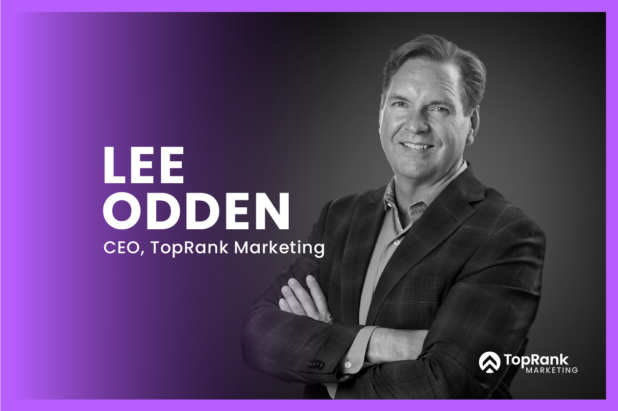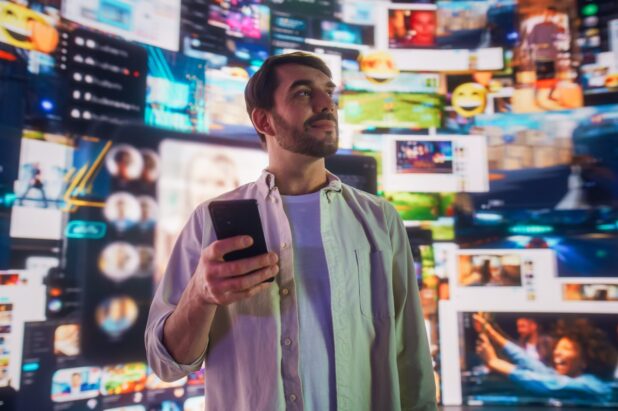Why personalize B2B content? If your solution is the best fit for a particular problem, why not just list your features and benefits and let your product sell itself?
That’s the kind of thinking that dominated B2B marketing for decades. But in the age of distraction, we need to embrace a simple truth:
B2B content is not about you.
It’s not about your solution or your brand. Your audience should be the star of your content — they should see themselves represented in it. B2B content needs relevance and resonance to rise above the noise and earn attention.
Here’s why personalization is essential for B2B content now, and why it will be even moreso in the future.
Why Personalization Matters in B2B Content
Personalization isn’t just about sprinkling a few custom details here and there. It’s about understanding your audience’s pain points, challenges, and aspirations, and crafting content that directly speaks to those points. When you show that you’ve done your homework and truly “get” your audience, you build a foundation of trust that paves the way for fruitful interactions.
Crafting Personalized B2B Content
So, how do you create personalized B2B content that hits the bullseye? Here’s a quick guide to get you started.
1 — Know Your Audience Inside and Out
Too often, creating market personas involves more creative writing than data mining. It’s all well and good to try to empathize with your target audience as a mental exercise. But don’t stop there.
Start with defining the industries, job titles, and even potential target accounts that fit your ideal customer profile. Then take it a step further: Who are the people you’re trying to reach? What conversations are they having and where are they talking?
Even more important: Who are these people listening to already and what messages are they hearing? Using tools like Meltwater and Traackr can help you see who is influential to your target audience. From there, you can analyze what content people are engaging with, too.
The more you know about your audience, the more you can tailor content to them based on facts, not just speculation.
“The more you know about your audience, the more you can tailor content to them based on facts, not just speculation.” — Joshua Nite @NiteWrites Share on X2 — Segmentation is Key
Once you’ve gathered your data, segment your audience. Create distinct groups based on shared characteristics. This allows you to create content that speaks directly to the concerns of each group.
Don’t be afraid to create many small segments, as long as each one has significant differences in their pain points or potential messaging.
3 — Customize with Care
It may seem like personalizing content for multiple segments would get unwieldy. But don’t think of it as creating entirely net new content for each group. Start with a more general asset — blog post, infographic, eBook — and add more context and detail for each specific segment.
For example, say you have original research about the current state of the finance function in large businesses. You create a report: The Evolving Role of Finance in 2023. Then you add statistics focusing on CFOs, along with content from CFO influencers to create The CFO’s Guide to Finance in 2023. You could create a CPA Guide the same way, and even a guide for CEOs navigating the changes in finance.
Each of these assets can use relevant material from your original report with a modicum of additional content for each segment.
When you’re done, you have multiple assets you can promote to highly-relevant, specific audiences.
4 — Personalize Your Nurturing
Specific and relevant content will earn attention. But consistency is what develops a relationship. Make sure that each of your segments gets its own unique nurture track. If the CEO downloads your What CEOs Need to Know about Finance in 2023 eBook, the followup email shouldn’t address them as a CFO.
“Specific and relevant content will earn attention. But consistency is what develops a relationship. Make sure that each of your segments gets its own unique nurture track.” — Joshua Nite @NiteWrites Share on X5 — Use Tech to Drive New Experiences
You don’t need a super-sophisticated tech stack to research, segment and tailor content to specific audiences. But if you do have martech on your side, you can get more creative with personalization.
With the right tools in place, you can personalize content dynamically based on user behavior. Email content, social ads and even your landing pages can contain adaptive content.
Benefits of Personalization in B2B Content
When people can see themselves reflected in your content, they’re more likely to give you their attention. The benefits extend through the entire funnel:
- Higher Engagement: Personalized content stands out in the sea of generic messages, leading to higher open rates, click-through rates, and longer time spent on your website.
- Enhanced Lead Nurturing: When your content addresses the specific challenges your leads face, you’re nurturing them with relevant solutions, making them more likely to convert.
- Strengthened Relationships: By showing your audience that you understand their needs, you build trust and establish yourself as a partner who truly cares about their success.
- Improved ROI: Investing in personalization tools and strategies can yield impressive returns by converting more leads into loyal customers.
- Data-Driven Insights: Personalization is not a guessing game. It’s fueled by data and insights. These insights can guide your future content strategies and refine your targeting.
The Future of Personalization in B2B Content
Let’s be real: We’re already facing a glut of impersonal, AI-driven content, and the situation is likely to get worse before it gets better.
But the increase in “noise” content means that thoughtful, resonant and relevant “signal” content will be even more valuable. Instead of using AI to create generic content in bulk, we can use AI tools to offer more meaningful content. Imagine sending a personalized video message to a potential client, addressing their unique challenges and offering tailored solutions.
By taking the time to understand your audience, segmenting effectively, and crafting content that speaks directly to their needs, you’re not just delivering information – you’re fostering connections that can lead to meaningful business relationships.
As the content ecosphere becomes more impersonal, artificial and generic, we need content personalized with data-driven insight, created by and for human beings.
Influencer marketing is one key way to bring more value, resonance and reach to your content. Check out the Ultimate Guide to Influencer Marketing for B2B Brands to learn more.



